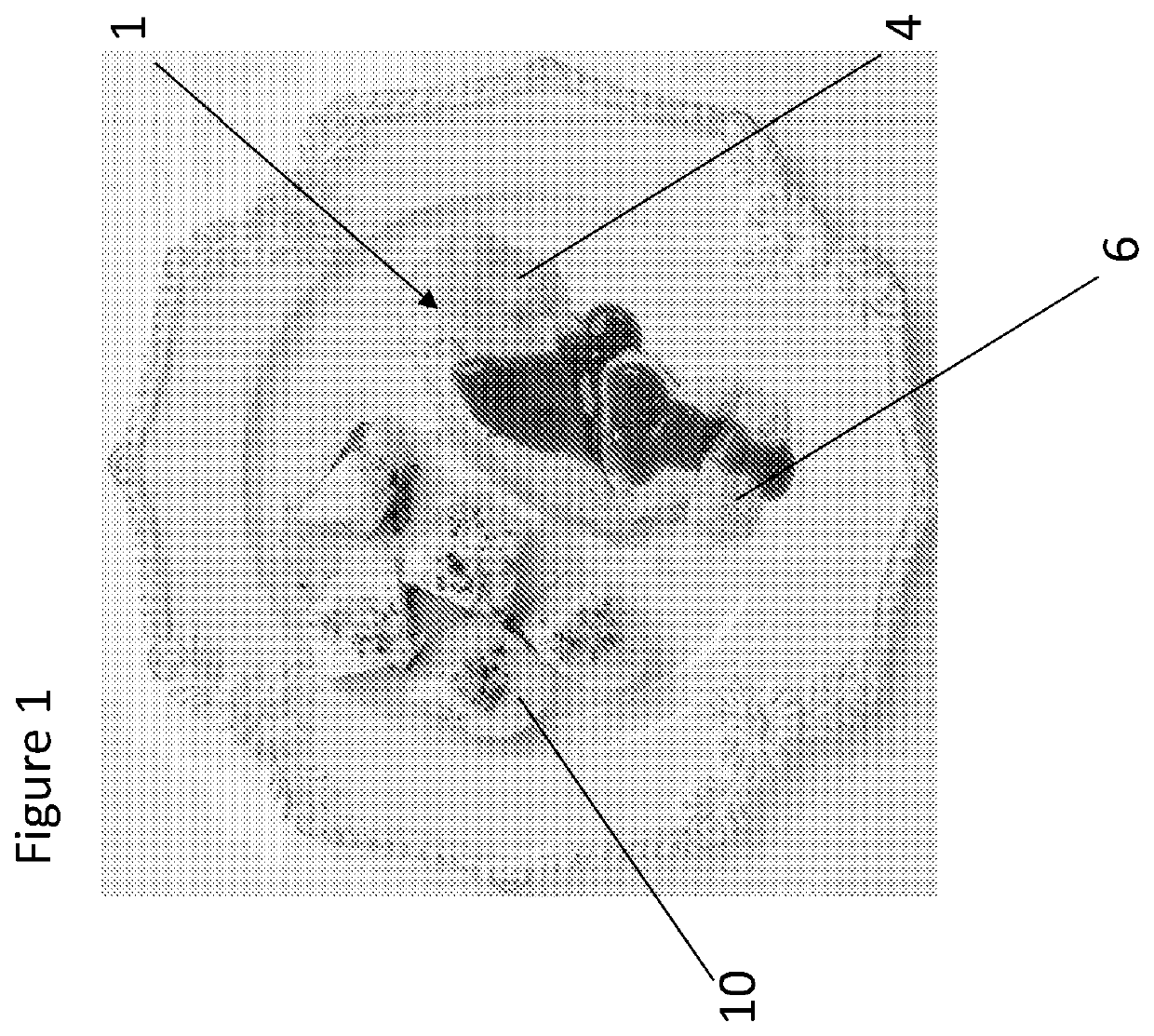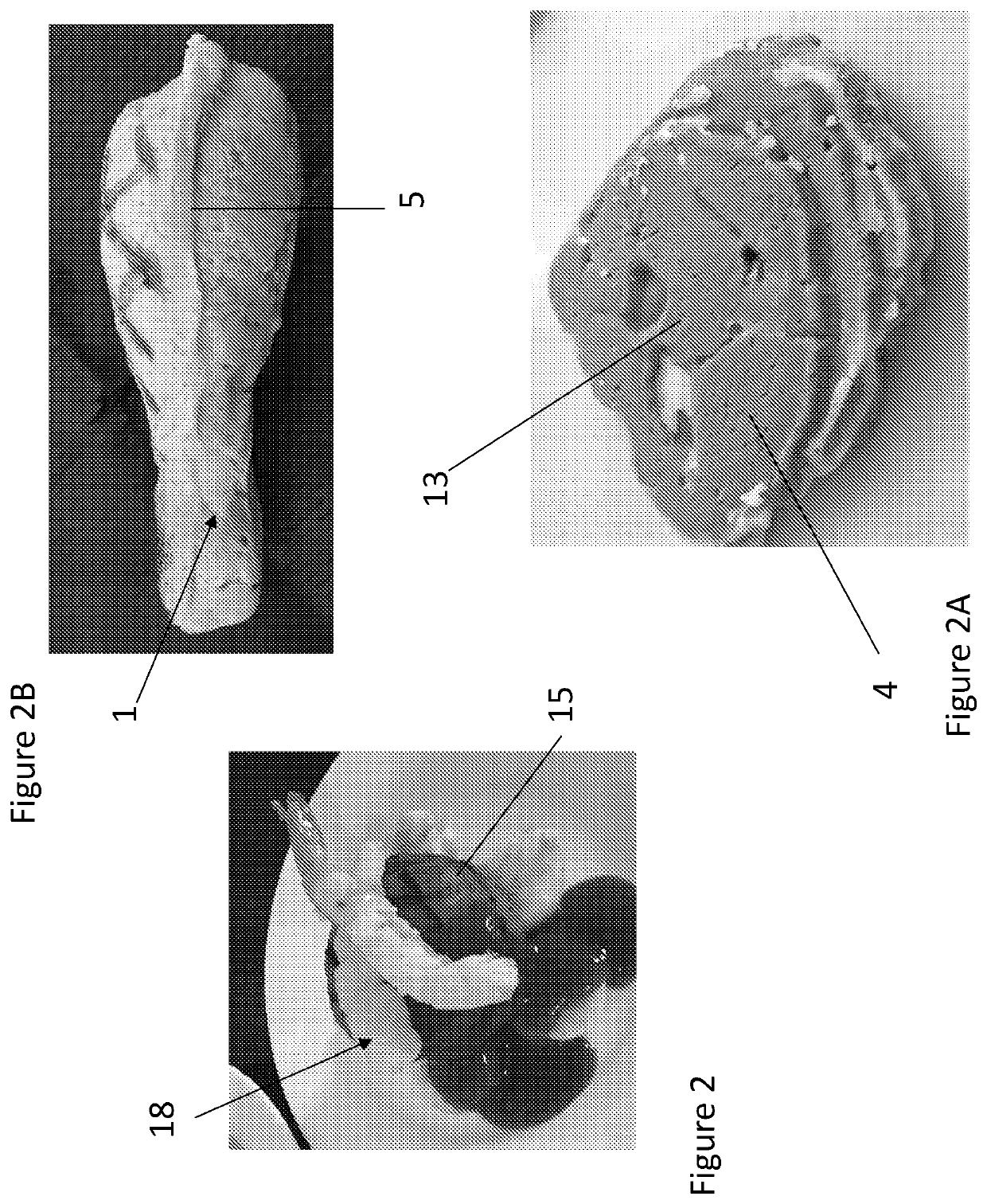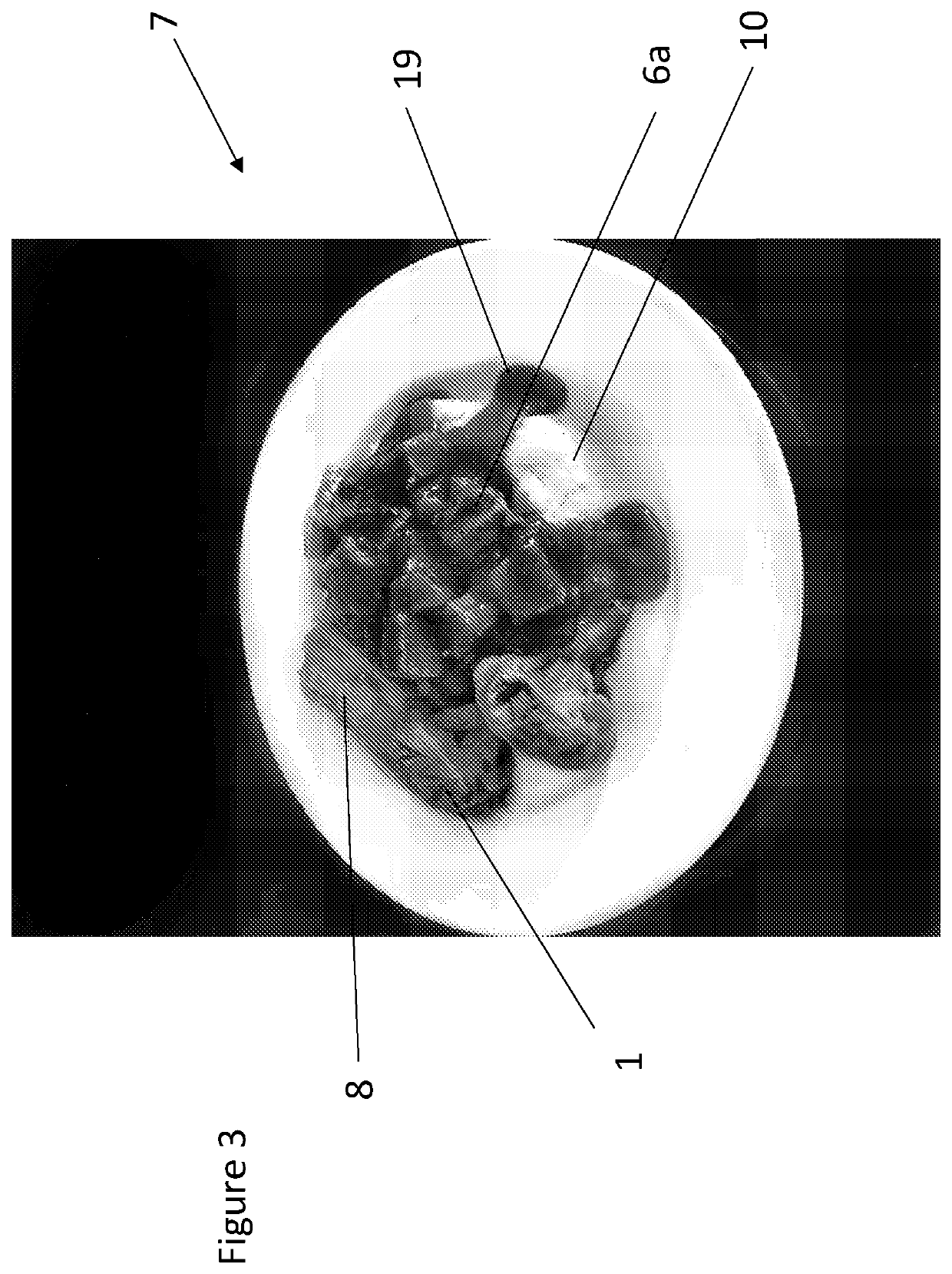Texture modified food product
- Summary
- Abstract
- Description
- Claims
- Application Information
AI Technical Summary
Benefits of technology
Problems solved by technology
Method used
Image
Examples
Embodiment Construction
[0080]The texture modified food product described and illustrated herein is primarily in relation to meat, this is merely illustrative, and it is contemplated that the texture modified food product and method of preparation described herein is generally applicable to all manner of consumable protein sources, from meats, fish and other seafood. Some steps of the process are adjustable to cater for specific meats or fish which may require more rigorous processing due to their cellular structure, for example beef, or less rigorous processing, for example salmon.
[0081]The term “food” as used herein is understood to refer generally to all meats and fish for human consumption. As such, the terms meat and fish are broadly used to refer to proteins from living organisms whether from land animals or aquatic animals that are safe for human consumption.
[0082]With reference to FIGS. 1-6, there is provided a food product 1, comprising; a paste 32 formed from a meat or fish, the paste 32 retainin...
PUM
| Property | Measurement | Unit |
|---|---|---|
| Temperature | aaaaa | aaaaa |
| Time | aaaaa | aaaaa |
| Viscosity | aaaaa | aaaaa |
Abstract
Description
Claims
Application Information
 Login to View More
Login to View More - R&D
- Intellectual Property
- Life Sciences
- Materials
- Tech Scout
- Unparalleled Data Quality
- Higher Quality Content
- 60% Fewer Hallucinations
Browse by: Latest US Patents, China's latest patents, Technical Efficacy Thesaurus, Application Domain, Technology Topic, Popular Technical Reports.
© 2025 PatSnap. All rights reserved.Legal|Privacy policy|Modern Slavery Act Transparency Statement|Sitemap|About US| Contact US: help@patsnap.com



